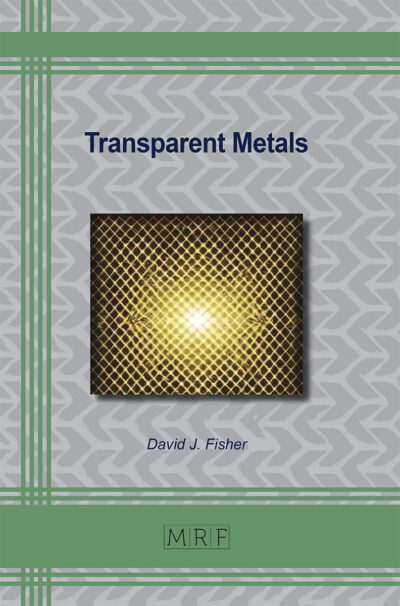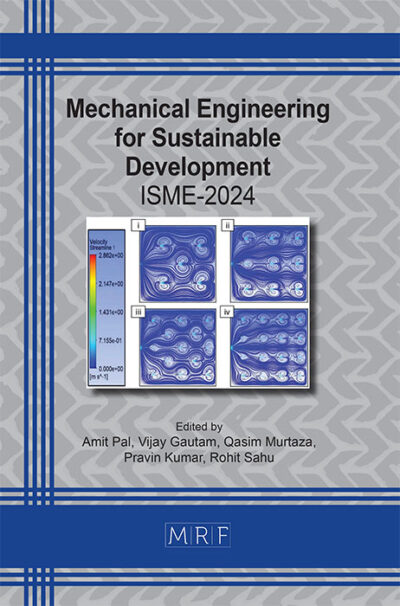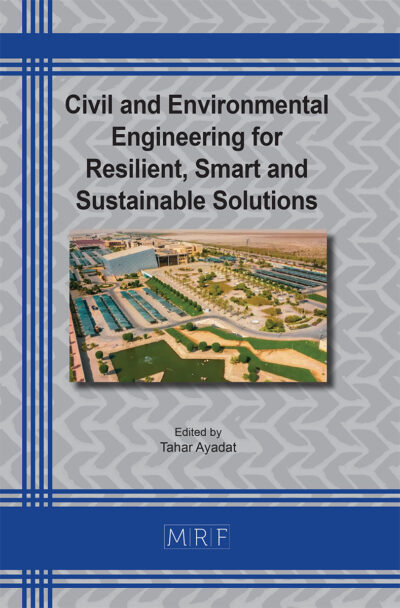Numerical analysis of pavement structure on expansive subgrade stabilized with surcharge pressure
Adel Djellali, Rachida Malaoui, Zied Benghazi, Debojit Sarker, Behrooz Saghafi
Abstract. Soils swell upon wetting and shrink when drying. This behavior can sustain damage to structures, particularly, light buildings and roads. The phenomenon is exciting to be researched, how far the effect of water contents is towards the behavior of free swelling of expansive soils. The aim study of this investigation is to discuss the findings on analysis results of pavement structure constructed on a relatively expansive material stabilized by an application of surcharge pressure. Samples were taken to the laboratory from the subgrade of a deteriorated road. The soils were classified as medium plasticity with medium to high expansion potential. The free swell oedometer test indicated a volumetric strain v = 0.12 % with a swelling pressure of 520 kPa. An adequate surcharge pressure was used according to the procedure described in the paper to stabilize the deformations induced by the subgrade. The load-displacement behavior of expansive subgrade soil is studied using the Software PLAXIS 3D. After simulation, it was observed that the swelling deformations were considerably reduced by 263% without any cracks in the pavement.
Keywords
Flexible Pavements, Expansive Subgrades, Soil Stabilization, Surcharge Pressure, Finite Element Method
Published online 2/25/2025, 7 pages
Copyright © 2025 by the author(s)
Published under license by Materials Research Forum LLC., Millersville PA, USA
Citation: Adel Djellali, Rachida Malaoui, Zied Benghazi, Debojit Sarker, Behrooz Saghafi, Numerical analysis of pavement structure on expansive subgrade stabilized with surcharge pressure, Materials Research Proceedings, Vol. 48, pp 961-967, 2025
DOI: https://doi.org/10.21741/9781644903414-104
The article was published as article 104 of the book Civil and Environmental Engineering for Resilient, Smart and Sustainable Solutions
![]() Content from this work may be used under the terms of the Creative Commons Attribution 3.0 license. Any further distribution of this work must maintain attribution to the author(s) and the title of the work, journal citation and DOI.
Content from this work may be used under the terms of the Creative Commons Attribution 3.0 license. Any further distribution of this work must maintain attribution to the author(s) and the title of the work, journal citation and DOI.
References
[1] G. Landlin, S.Bhuvaneshwari, Evaluation of swelling pressure of an expansive soil stabilized with lime and lignosulphonate as overlay cushion: an experimental and numerical quantification, Environ Sci Pollut Re. 30.58 (2023) 122087-122106. https://doi.org/10.1007/s11356-024-34835-0
[2] A. Djellali, D. Sarker, B. Saghafi, Experimental and numerical prediction of airport pavement over expansive subgrade stabilized by asphalt layers, Arab. J. Geosci. 15.18 (2022) 1503. https://doi.org/10.1007/s12517-022-10778-z
[3] E.J,Yang, Z.T. Zeng, H.Y. Mo, T. Hu, C.L. Yang, S.H. Tang, Analysis of Bound Water and Its Influence Factors in Mixed Clayey Soils. Water 2021, 13, 2991. https://doi.org/10.3390/w13212991
[4] D.R.Snethen, F.C.Townsend, L.D. Johnson, D.M. Patrick, P.J.Vedros, D.R .Snethen, P.J. Vedros, A Review of Engineering Experiences with Expansive Soils in Highway Subgrades, Waterways Experiment Station, NTIS No.” ADA 20309 (1975) 4-25
[5] M. Syed, A.GuhaRay, S.K. Chukka, S. Ahmad, A laboratory investigation and numerical modeling on fiber reinforced lime and alkaline binder stabilized pavement subgrade soil.” Case Stud. Constr. Mater. 20 (2024): e03000.
[6] P.K. Jain, Enhancing the properties of swelling soils with lime, fly ash, and expanded polystyrene-A review, Heliyon 10.12 (2024).
[7] D. Sarker, J.X. Wang, Characterization of Soil-Geosynthetic Interaction to Evaluate Reinforcement Location in Pavement over Expansive Soils, In : Geo-Congress 2022 (2022) 367-379
[8] F.H. Chen, Foundations on expansive soils. Vol. 12. Elsevier, 2012.
[9] S. Selvakumar, B. Soundara, Swelling behavior of expansive soils stabilized with expanded polystyrene geofoam inclusion, New Mater. Civ. Eng. Butterworth-Heinemann. (2020) 745-776.
[10] A.Djellali, A. Houam, B. Saghafi, A. Hamdane, Z. Benghazi, Static analysis of flexible pavements over expansive soils, Int. J. Civ. Eng. 15 (2017) 391-400. https://doi.org/10.1007/s40999-016-0058-6.
[11] S.S. Razouki, MA. Al-Shefi, Effects and observations of surcharge load on the laboratory CBR and resilient modulus values of roadbed soil, Q. J. Eng. Geol. Hydrogeol. 35.1 (2002) 89-95. https://doi.org/10.1144/qjegh.35.1.89
[12] S.S. Razouki, A.N. Ibrahim, Improving the resilient modulus of a gypsum sand roadbed soil by increased compaction, Int. J. Pavement Eng. 20.4 (2019) 432-438. https://doi.org/10.1080/10298436.2017.1309190
[13] R.A. Khalid, N.Ahmad, M.U. Arshid, S.B. Zaidi, T. Maqsood, A. Hamid, Performance evaluation of weak subgrade soil under increased surcharge weight, Constr. Build. Mater. 318 (2022): 126131. https://doi.org/10.1016/j.conbuildmat.2021.126131
[14] M.W. Gui, R.P. Rajak, Responses of Structural Components of a Full-Scale Nailed Retaining Structure under the Influence of Surcharge Loading and Nail Head Configuration: A Numerical Study, Buildings 13.2 (2023) 561. https://doi.org/10.3390/buildings13020561
[15] K. Riaz, N. Ahmad, Effect of illite on the mechanical properties of subgrade soil under varying surcharge loads, Heliyon 10.9 (2024).
[16] J.L. Blés, J.J. Fleury, Carte géologique de l’Algérie au 1/50000 : feuille n_178, ” Morsott, avec notice explicative détaillée, Service de cartes Géologique et Sonatrach, Division d’hydrocarbure, Direction des explorations, Alger, Algérie ,1970.
[17] J.M. Vila, La chaîne alpine de l’Algérie orientale et des confins Algéro-Tunisiens. Thèse de Doctorat ès sciences, Université Pierre et Marie curie, Paris VI,1980.
[18] ASTM D4318, Standard test methods for liquid limit, plastic limit, and plasticity index of soils”. American Soci- ety for Testing and Materials, West Conshohocken, 2010.
[19] A. Djellali, A. Houam, B. Saghafi, Indirect estimation of swelling pressure of clayey subgrade under pavement structures, Arab. J. Sci. Eng (2017): 3991-3999, 42 (9). https://doi.org/10.1007/s13369-017-2546-7.
[20] K. Terzaghi, Anchored bulkheads, Transactions of the American Society of Civil Engineers 119.1 (1954) 1243-1280












